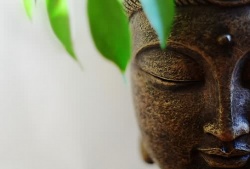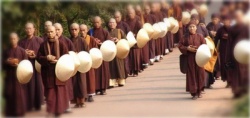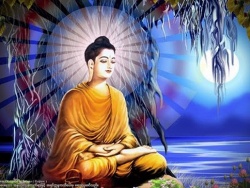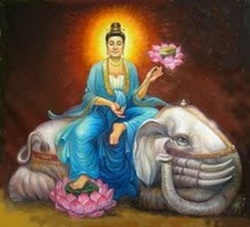Difference between revisions of "The Eastern Hongwanji"
m (Text replacement - "building" to "building") |
|||
| Line 5: | Line 5: | ||
After the division, those who [[successively]] occupied the position of Jūshoku ("residing priest") or Hosshu ("the chief [[abbot]]") at the Eastern Hongwanji were: Kyōnyo, Sennyo. Takunyo, Jyōnyo, Ichinyo, [[Shinnyo]], Jyūnyo, Tatsunyo, Gonnyo, and Gennyo. The present Hosshu is Shōnyo who is called Kōyen. | After the division, those who [[successively]] occupied the position of Jūshoku ("residing priest") or Hosshu ("the chief [[abbot]]") at the Eastern Hongwanji were: Kyōnyo, Sennyo. Takunyo, Jyōnyo, Ichinyo, [[Shinnyo]], Jyūnyo, Tatsunyo, Gonnyo, and Gennyo. The present Hosshu is Shōnyo who is called Kōyen. | ||
| − | Since its first establishment in 1602, the Eastern Hongwanji had [[suffered]] no {{Wiki|disaster}} until 1788 when the great [[fire]] of Kyōto consumed the [[greater]] parts of the city, and the [[temple]] too could not escape its devastating progress. It was rebuilt in 1798, but in 1823 it was again destroyed by a [[fire]]. The | + | Since its first establishment in 1602, the Eastern Hongwanji had [[suffered]] no {{Wiki|disaster}} until 1788 when the great [[fire]] of Kyōto consumed the [[greater]] parts of the city, and the [[temple]] too could not escape its devastating progress. It was rebuilt in 1798, but in 1823 it was again destroyed by a [[fire]]. The building was restored in 1835, and burned again in 1858 when Kyōto [[suffered]] another great [[fire]]. Though a temporary hall was [[constructed]] in 1860, it met the same {{Wiki|disaster}} as before, when a [[war]] broke out within the city in 1864. The present magnificent building was finished in 1895. |
[[File:2nhwalk.jpg|thumb|250px|]] | [[File:2nhwalk.jpg|thumb|250px|]] | ||
| Line 15: | Line 15: | ||
In 1911, this College was again transferred to Takakura, Kyōto, and the [[name]] of Shinshū Daigaku was changed to that of Shinshū Ōtani Daigaku. It was first presided by Ōtani Yeiryō, younger brother of the present Hosshu, Shōnyo Shōnin. He was then the chief of the educational department of the Eastern Hongwanji. During his presidency, the present new buildings were completed at Oyama, in Kami-gamo, {{Wiki|north}} of Kyōto. In the last year, Nanjō Bunyū became its president. | In 1911, this College was again transferred to Takakura, Kyōto, and the [[name]] of Shinshū Daigaku was changed to that of Shinshū Ōtani Daigaku. It was first presided by Ōtani Yeiryō, younger brother of the present Hosshu, Shōnyo Shōnin. He was then the chief of the educational department of the Eastern Hongwanji. During his presidency, the present new buildings were completed at Oyama, in Kami-gamo, {{Wiki|north}} of Kyōto. In the last year, Nanjō Bunyū became its president. | ||
| − | Since 1888, the Eastern Hongwanji has been | + | Since 1888, the Eastern Hongwanji has been building schools for boys as well as for girls in various parts of [[Japan]], the largest of which is now at Imakumano, Kyōto, where are educated 700 boys belonging to the True Sect. One can judge from this how increasingly influential is growing the educational [[activity]] of the Eastern Hongwanji in these days. |
[[File:Buddha-po.jpg|thumb|250px|]] | [[File:Buddha-po.jpg|thumb|250px|]] | ||
| − | Several monthly periodicals are issued by this branch of the True Sect. "The Shūhō" is the official {{Wiki|organ}} containing the business reports of the Sect and the accounts of the missionary [[activities]] at home and | + | Several monthly periodicals are issued by this branch of the True Sect. "The Shūhō" is the official {{Wiki|organ}} containing the business reports of the Sect and the accounts of the missionary [[activities]] at home and abroad. The paper in which are published the results of [[scholarly]] [[investigation]] relating to [[religion]] and [[philosophy]] in {{Wiki|general}} is called "The Mujintō," while those periodicals which [[concern]] themselves with the practical side of [[religion]] are "The Seishinkai," "The Fukyōkai," "The Kyūdō," "The Kwanren," "The Futoku," "The Shinfukyō," "The Makoto," "The Dōhō," "The Hōzō," "The Hōwa," "The Hikari," "The Shinsekai no Tokufū," etc. Besides these, there are many important writings yearly coming from the pen of [[scholars]] belonging to the True Sect. |
The Eastern Branch of Hongwanji is at present showing the tendency to become a [[spiritual]] center of [[Japan]]. The [[Buddhist]] families belonging to this denomination amount to more than several millions, and it has over fifty Betsuin (or branch [[temples]]), some 8160 Matsuji (or local [[temples]]), and several hundreds of lecture halls (or in [[Japanese]] Sekkyōjo) distributed all over the country. The managers of these places are called either "Rimban," or "Jyūshoku," or "Shunin"; and the Jyūshoku of the local [[temple]], that is, Matsuji, is hereditary as is the [[master]] (hosshu) of the mother Hongwanji. | The Eastern Branch of Hongwanji is at present showing the tendency to become a [[spiritual]] center of [[Japan]]. The [[Buddhist]] families belonging to this denomination amount to more than several millions, and it has over fifty Betsuin (or branch [[temples]]), some 8160 Matsuji (or local [[temples]]), and several hundreds of lecture halls (or in [[Japanese]] Sekkyōjo) distributed all over the country. The managers of these places are called either "Rimban," or "Jyūshoku," or "Shunin"; and the Jyūshoku of the local [[temple]], that is, Matsuji, is hereditary as is the [[master]] (hosshu) of the mother Hongwanji. | ||
| Line 31: | Line 31: | ||
The Eastern Hongwanji also spends much for philanthropy. One of its successful works attracting much public [[attention]] is the establishment of a free lodging station for the poor, in Tōkyō. | The Eastern Hongwanji also spends much for philanthropy. One of its successful works attracting much public [[attention]] is the establishment of a free lodging station for the poor, in Tōkyō. | ||
| − | The | + | The building of a branch [[temple]] (betsuin) at Shanghai in 1876 marked the beginning of the foreign missionary work by the Eastern Hongwanji. Since then, the [[missionaries]] have been sent to several places in [[China]], [[Korea]], and other lands. These foreign [[missionaries]] are called Kaikyōshi, [[meaning]] carriers of the Good Law throughout the [[world]] in [[order]] to bring our brethren to [[enlightenment]]. |
==See Also== | ==See Also== | ||
Revision as of 12:06, 30 September 2013
In September, 1594, Kyōnyo Shōnin resigned his position as "Jūshoku" (residing priest) of the Hongwanji at Horikawa, Nishi-Rokujō, in favor of his brother, Junnyo, while Kyōnyo himself made his residence at the new Hongwanji built (1602) at Karasu-maru, Higashi-Rokujō, the site of which was donated by Tokugawa Iyeyasu, the founder of the Tokugawa Shōgunate government. Since then, the Hongwanji at Horikawa was designated the Western Hongwanji and the one at Karasu-maru the Eastern Hongwanji. With the co-existence of these two centers of power, the followers of the True Sect and their numerous local temples were naturally divided into two groups, alleging their loyalty to either of their two mother Hongwanjis. Those who went to the Eastern Hongwanji were called the Eastern Branch, and the other the Western. Ever since that time, these two branches of the Hongwanji have kept on their brotherly relations, each endeavoring to contribute to the prosperity of their common cause. In 1881, the Eastern Branch came to be known as the Ōtani Branch, while the Western the Hongwanji Branch.
After the division, those who successively occupied the position of Jūshoku ("residing priest") or Hosshu ("the chief abbot") at the Eastern Hongwanji were: Kyōnyo, Sennyo. Takunyo, Jyōnyo, Ichinyo, Shinnyo, Jyūnyo, Tatsunyo, Gonnyo, and Gennyo. The present Hosshu is Shōnyo who is called Kōyen.
Since its first establishment in 1602, the Eastern Hongwanji had suffered no disaster until 1788 when the great fire of Kyōto consumed the greater parts of the city, and the temple too could not escape its devastating progress. It was rebuilt in 1798, but in 1823 it was again destroyed by a fire. The building was restored in 1835, and burned again in 1858 when Kyōto suffered another great fire. Though a temporary hall was constructed in 1860, it met the same disaster as before, when a war broke out within the city in 1864. The present magnificent building was finished in 1895.
The Eastern Branch, since its early history, has encouraged the study of its canonical writings and the education of able preachers; and it was during the Kwambun era (1661-1672) that the Lecture Hall of the Kwanzeon-ji was removed from Tsukushi, and the first school was established in Shōsei Garden, better known by the name of Kikoku-tei. In 1754, this school was transferred to Takakura, Kyōto, and the curriculum was prepared on an extended scale. This is what is known as the Takakura College. Among the many noted scholars that were educated at the College, there were the following: Yekū, Yenen, Yerin, Zuiye, Jinrei, Senmyō, Ton-ye, Hōkei, Gitō, Hōkai, Daigan, Tokuryū, Reiwō, Reiyō, Shūzon, Gijyō, Ryūwon, Gidō, Jingō, Giten, Gyōchyū, Sengan, Senryū, Kakuju, etc.
By these savants, the philosophical foundations of not only the True Sect but all the other Buddhist sects were minutely investigated. Since the introduction of Western sciences into the Far East, the College granted the establishment of a new department where Buddhism as well as the sciences and philosophies of the East and West will be studied. In 1901, this new department was transferred to Sugamo, Tōkyō, and another enlargement and innovation was carried out in order to meet all the requirements of modern education. It can safely be said that this College at present offers a most complete course of study for investigators of Buddhism. After its removal to Tōkyō, the College was first presided by Kiyozawa Mansi; and Nanjō Bunyū was his successor.
In 1911, this College was again transferred to Takakura, Kyōto, and the name of Shinshū Daigaku was changed to that of Shinshū Ōtani Daigaku. It was first presided by Ōtani Yeiryō, younger brother of the present Hosshu, Shōnyo Shōnin. He was then the chief of the educational department of the Eastern Hongwanji. During his presidency, the present new buildings were completed at Oyama, in Kami-gamo, north of Kyōto. In the last year, Nanjō Bunyū became its president.
Since 1888, the Eastern Hongwanji has been building schools for boys as well as for girls in various parts of Japan, the largest of which is now at Imakumano, Kyōto, where are educated 700 boys belonging to the True Sect. One can judge from this how increasingly influential is growing the educational activity of the Eastern Hongwanji in these days.
Several monthly periodicals are issued by this branch of the True Sect. "The Shūhō" is the official organ containing the business reports of the Sect and the accounts of the missionary activities at home and abroad. The paper in which are published the results of scholarly investigation relating to religion and philosophy in general is called "The Mujintō," while those periodicals which concern themselves with the practical side of religion are "The Seishinkai," "The Fukyōkai," "The Kyūdō," "The Kwanren," "The Futoku," "The Shinfukyō," "The Makoto," "The Dōhō," "The Hōzō," "The Hōwa," "The Hikari," "The Shinsekai no Tokufū," etc. Besides these, there are many important writings yearly coming from the pen of scholars belonging to the True Sect.
The Eastern Branch of Hongwanji is at present showing the tendency to become a spiritual center of Japan. The Buddhist families belonging to this denomination amount to more than several millions, and it has over fifty Betsuin (or branch temples), some 8160 Matsuji (or local temples), and several hundreds of lecture halls (or in Japanese Sekkyōjo) distributed all over the country. The managers of these places are called either "Rimban," or "Jyūshoku," or "Shunin"; and the Jyūshoku of the local temple, that is, Matsuji, is hereditary as is the master (hosshu) of the mother Hongwanji.
The followers of this Sect belong either to a branch temple (betsuin), or to a local temple (matsuji), or to a lecture hall (sekkyōjo); and they are called its "Danke" (supporters or donors) or "Kōjū" (members or associates). The relation between the local temple and its supporters is close and cordial.
Missionaries are regularly despatched from the headquarters, who will preach on fixed dates at a branch temple, or local temple or lecture hall. We have at present about 2500 of such travelling preachers. In the larger towns there are some stationary teachers whose mission is to visit factories, educational institutions, young men's associations, etc.; they may also respond to invitations from the military post stationed there. There are about 120 stationary teachers. We have, further, several tens of the religious advisers who are sent to teach in the penitentiaries at the request of the government.
The Eastern Hongwanji also spends much for philanthropy. One of its successful works attracting much public attention is the establishment of a free lodging station for the poor, in Tōkyō.
The building of a branch temple (betsuin) at Shanghai in 1876 marked the beginning of the foreign missionary work by the Eastern Hongwanji. Since then, the missionaries have been sent to several places in China, Korea, and other lands. These foreign missionaries are called Kaikyōshi, meaning carriers of the Good Law throughout the world in order to bring our brethren to enlightenment.



